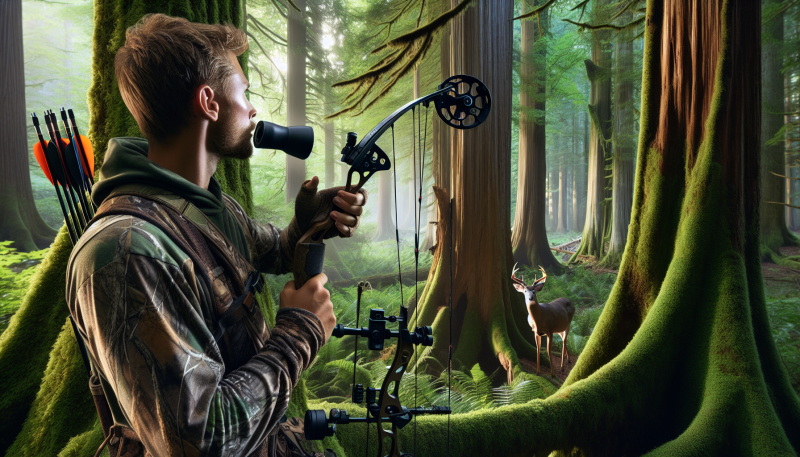When it comes to choosing a hunting blind, there are several different types to consider. Each type has its own advantages and disadvantages, so it's important to choose the one that best suits your hunting style and environment.
One of the most popular types of hunting blinds is the ground blind. Ground blinds are typically lightweight and portable, making them easy to set up and move around. They provide great cover and concealment for hunters, allowing them to stay hidden from their prey. However, ground blinds can be difficult to see out of and may not provide the best vantage point for shooting.
Another common type of hunting blind is the tree stand. Tree stands are elevated platforms that are typically attached to trees. They provide hunters with a better vantage point for shooting and allow for a clearer line of sight. However, tree stands can be bulky and difficult to set up, and they may not be suitable for all hunting environments.
Other types of hunting blinds include box blinds, tower blinds, and layout blinds. Each type has its own unique features and benefits, so it's important to consider your hunting needs and preferences when choosing a blind. Ultimately, the best hunting blind is one that provides you with the cover, concealment, and comfort you need to have a successful hunting experience.
Factors to Consider
When choosing a hunting blind, there are several factors to consider to ensure you have a successful and comfortable hunting experience. The first thing to consider is the type of hunting you will be doing. Different types of hunting blinds are designed for specific purposes, such as ground blinds for bow hunting or elevated blinds for gun hunting.
Another important factor to consider is the size of the hunting blind. Make sure to choose a blind that is spacious enough to accommodate you, your gear, and any companions you may have while hunting. Additionally, consider the weight and portability of the blind, especially if you will be transporting it to different hunting locations.
It is also important to consider the material and construction of the hunting blind. Look for blinds made from durable and weather-resistant materials that will withstand the elements and provide long-lasting use. Additionally, consider features such as windows, zippers, and camouflage patterns that will enhance your hunting experience and help you blend into your surroundings.
Lastly, consider your budget when choosing a hunting blind. While it is important to invest in a quality blind that will meet your hunting needs, there are a variety of options available at different price points to fit your budget. Take the time to research and compare different blinds to find the best option for your hunting style and preferences.
Setting Up Your Blind
First, ensure you have scouted the area thoroughly before setting up your blind. Look for signs of game activity such as tracks, droppings, or bedding areas. Choose a location that is well concealed and offers a good view of the surrounding area. Make sure there are no obstacles obstructing your line of sight or shooting lanes.
Next, assemble your blind according to the manufacturer's instructions. Ensure all parts are securely fastened, and the blind is stable and sturdy. Place the blind in a strategic location where you have a clear view of your target area. Make sure the blind is positioned at a comfortable height for shooting and offers enough room for your gear and equipment.
Finally, camouflage your blind to blend in with the surroundings. Use natural foliage, branches, and brush to conceal the blind and break up its outline. Avoid using brightly colored fabric or materials that can spook game. Once your blind is set up and camouflaged, sit back, relax, and wait for your prey to come into view.
Maintenance and Storage Tips
When it comes to hunting blinds, proper maintenance and storage are key to ensuring their longevity and effectiveness in the field. Here are some top tips to help you keep your hunting blinds in tip-top shape.
First and foremost, regular cleaning is essential to prevent dirt, debris, and mold from building up on your hunting blind. Use a mild detergent and water to gently scrub the exterior of the blind, being careful not to damage the fabric. Make sure to thoroughly dry the blind before storing it to prevent mold growth.
Inspect your hunting blind regularly for any signs of wear and tear, such as ripped seams or broken zippers. Repair any damage promptly to ensure that your blind remains in good working condition. Additionally, consider treating the fabric of your blind with a water-repellent spray to protect it from the elements.
When storing your hunting blind during the off-season, make sure to properly fold or roll it according to the manufacturer's instructions. Store the blind in a cool, dry area away from direct sunlight to prevent fading and deterioration. It's also a good idea to place a few mothballs or cedar blocks in the storage container to deter pests. With these maintenance and storage tips, your hunting blind will be ready for action whenever you need it.

